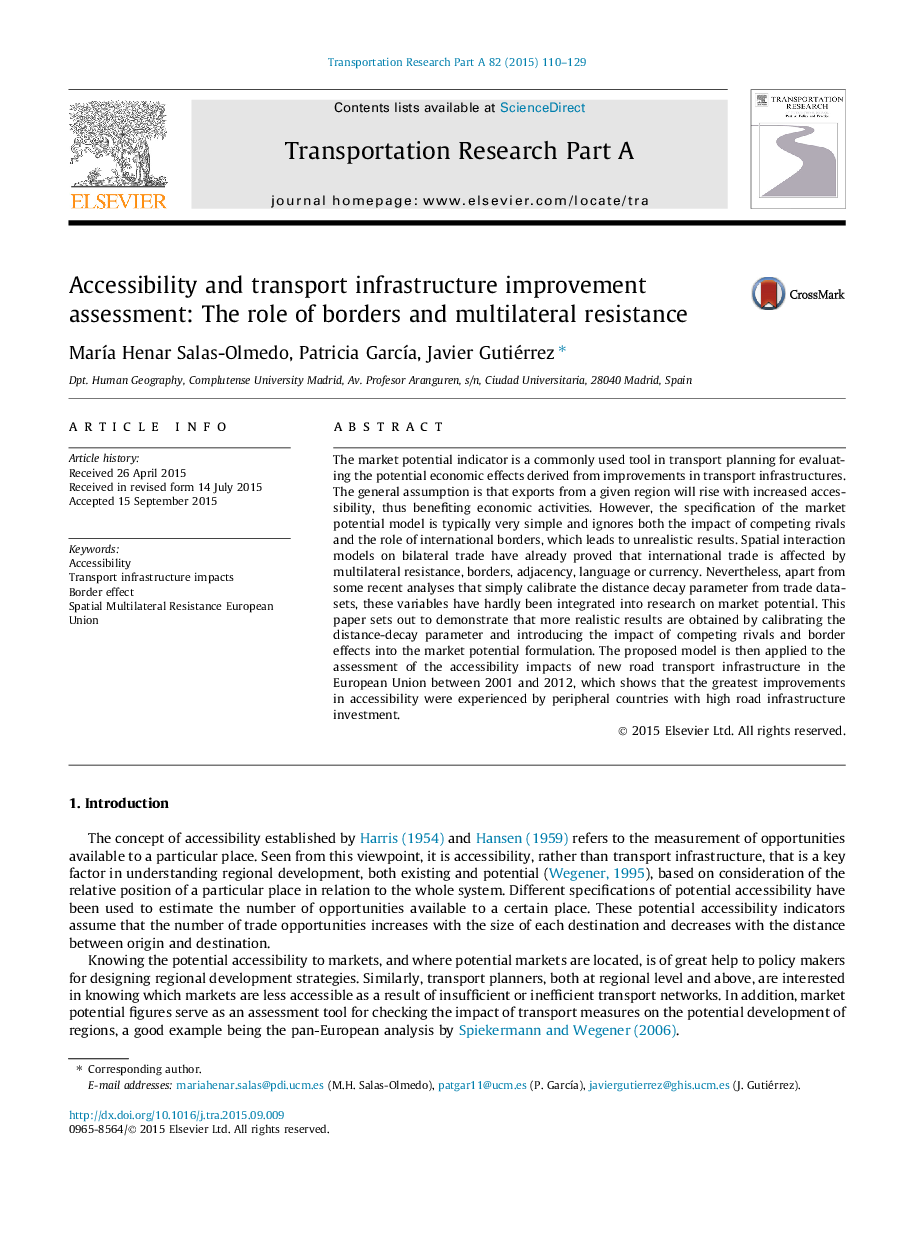| Article ID | Journal | Published Year | Pages | File Type |
|---|---|---|---|---|
| 6781042 | Transportation Research Part A: Policy and Practice | 2015 | 20 Pages |
Abstract
The market potential indicator is a commonly used tool in transport planning for evaluating the potential economic effects derived from improvements in transport infrastructures. The general assumption is that exports from a given region will rise with increased accessibility, thus benefiting economic activities. However, the specification of the market potential model is typically very simple and ignores both the impact of competing rivals and the role of international borders, which leads to unrealistic results. Spatial interaction models on bilateral trade have already proved that international trade is affected by multilateral resistance, borders, adjacency, language or currency. Nevertheless, apart from some recent analyses that simply calibrate the distance decay parameter from trade datasets, these variables have hardly been integrated into research on market potential. This paper sets out to demonstrate that more realistic results are obtained by calibrating the distance-decay parameter and introducing the impact of competing rivals and border effects into the market potential formulation. The proposed model is then applied to the assessment of the accessibility impacts of new road transport infrastructure in the European Union between 2001 and 2012, which shows that the greatest improvements in accessibility were experienced by peripheral countries with high road infrastructure investment.
Keywords
Related Topics
Physical Sciences and Engineering
Engineering
Civil and Structural Engineering
Authors
MarÃa Henar Salas-Olmedo, Patricia GarcÃa, Javier Gutiérrez,
